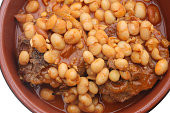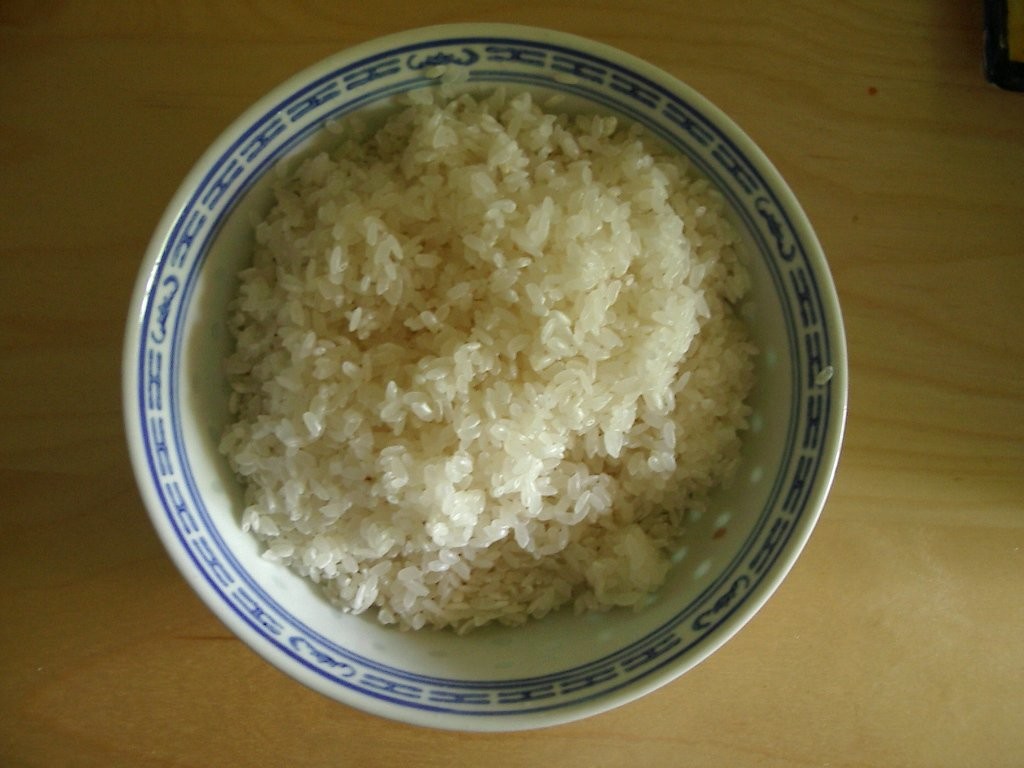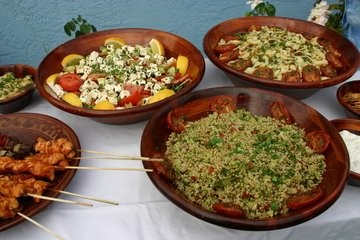Erasmus recipe for traditional food
During my internship in Portugal, I discovered that it was a little bit difficult to travel in another country which was very different in culture, in traditions and in gastronomy and to have the ability to accept this new reality right away, taking into account the difference occurring between ways of living and continents.
Whene you are far from home, everything changes: habits, nutrition, the way of living. The students are most of the time responsible for themselves and they need to find the right solutions to live well.
In the research lab where I was employed there was a restaurant where I had lunch every day: for only three euros I could eat a full plate with typical food and even one dessert. But at dinner I had to manage to prepare something by myself, which was not always something easy as I've alwyas lived with my parents and I never took this responsibility for real. One night I decided to prepare a typically Tunisian dish for my roommates and I wanted them to tell me their opinion about another culture ‘s recipe. Down below I will write how I prepared it.
First of all, the dish I prepared it's called Tunisian couscous; a lot of people still wonder about which the actual preparation of couscous is, as they usually find it already prepared in restaurants or they can even find it pre-cooked in supermarkets. Today this blog will help you to know the actual real preparation of the traditional couscous.
First Recipe: Couscous with vegetables
• Prepare the sauce with mixed vegetables, canned tomatoes, oil and water.
• First, begin by putting one glass of olive oil with one big onion cut into small pieces and three big spoons of canned tomatoes in a pan, and we mix them together on a moderate fire gas.
• Then, we add some of chickpeas with other vegetables, (for the quantity of vegetables it is really up to the person to put as much vegetables as they want in their sauce but in general its is better not to put too many things inside).
• The vegetables are usually: sliced carrots, sliced potatoes, some green pepper cleaned from the inside, some other green vegetables (this is optional for any people to choose).
• After mixing up everything, add four cups of water to the mix andh we make it boil.
• Add the meat in slices, or the fishes (the couscous can be cooked in many ways it can be with cow meat or with fishes cleaned in a very good way under running water or even with chicken breasts); this is also up to you to put as much quantity you want to make the flavor of the dish.

• Add the spices to the sauce. The spices are generally one spoon of salt, one spoon of hot red pepper, two spoons of coriander, one spoon of saffron and are the main element of the dish as they give a special flavor. Let the sauce boil in moderate fire for about twenty minutes until you can see that it gets more thick and the water gets absorbed.
• In the meanwhile, prepare the couscous (which is a white semolina). Put it in a big plate, add one spoon of salt, some olive oil and some water then try to separate the grains by hands so that it won't become a block once cooked.
• We generally use a special plate with gaps inside (I never really found in the European supermarkets even if I searched a lot), to put all the couscous there and then we place it on top of the sauce pan. The steam coming from the pan will generate heat and will allow the couscous to be cook in a very slow way.
• Finally after twenty minutes, put the couscous cooked in a plate and cover it with the sauce. Here you are! You have just prepared a typical Tunisian couscous decorated with meat and vegetables ready to be eaten by very hungry people.

Second recipe: rice with stuffed sheep's belly
My second recipe for the day is also very typical but it is a complicated preparation compared to other dishes. We usually cook it for big weddings or religious festivities as well. The name of the dish is "rice with stuffed sheep's belly", and here you can read its recipe:
• First begin with the preparation of the sheep ‘s belly. All the intestines of the sheep have to be removed very well before going on; the stomach too must be very well cleaned by putting it in boiling water for approximatively two minutes.
• The second step consists of cutting the intestines, along with the liver, the kidney and the lungs of the sheep in very small pieces mixed with chopped parsley and with some spices like one spoon of salt, one spoon of black pepper, some garlic and onion mixed together very well. Then you can put eveything in the stomach giving the the shape of a little bag previously sewn. You can also make some holes inside so to that it maintains the shape during the cooking.
•Prapare then the sauce, which is exactly the one of the couscous (so withh canned tomatoes, oil and water ecc. ).
• First, begin by putting one glass of olive oil with one big onion cut into small pieces and three big spoons of canned tomatoes and mix them together on a moderate fire.
• Then add some chickpeas, green pepper, and spices such as salt, black pepper; after having mixed up everything add one spoon of salt, one spoon of hot red pepper, two spoons of coriander, one spoon of saffron and let the mixed sauce boil on a moderate fire. Then add also four cups of water to the mix while it still boils and wait for about twenty minutes until you see that the sauce is getting thicker and the water has got absorbed.
• Then put rice into a bowl of water to clean it all and rinse it many times until the color of the water becomes pure. We use a special plate with gaps, we put all the quantity of rice there then we put it on the sauce panso that the steam coming from the pan will generate heat and will allow the riceto be cooked in a very slow way.

• Finally put the rice in a big recipient and cover it with the sauce and decorate it with the little meat bags. Here it is our main dish ready to be attacked by the most wild hungry people!

Photo gallery
Want to have your own Erasmus blog?
If you are experiencing living abroad, you're an avid traveller or want to promote the city where you live... create your own blog and share your adventures!
I want to create my Erasmus blog! →







Comments (0 comments)